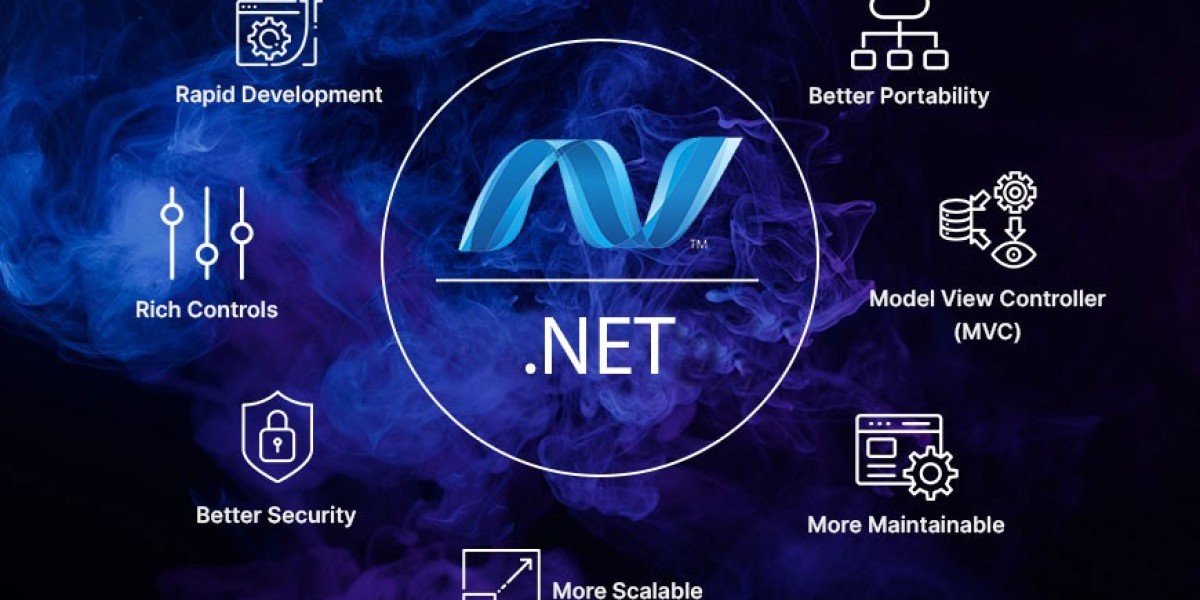.NET has long been one of the most powerful and popular frameworks for developing applications across various platforms, including web, mobile, and desktop. As businesses continue to demand faster, more efficient, and scalable solutions, the .NET framework is evolving to meet those needs.
Industry experts predict that .NET’s future will be marked by even greater flexibility, enhanced performance, and support for emerging technologies like artificial intelligence (AI) and the Internet of Things (IoT). In this article, we will explore what the future holds for .NET development, drawing insights from industry experts and examining the trends that will shape the framework’s evolution.
1. Cross-Platform Development Will Become Even More Seamless
One of the most significant advancements in recent years has been .NET’s shift towards cross-platform compatibility. With the release of .NET Core, developers can now build applications that run on multiple operating systems, including Windows, macOS, and Linux, without the need to maintain separate codebases.
Industry experts believe that this cross-platform capability will continue to improve. Microsoft has committed to making .NET the go-to framework for building applications across all platforms. This means developers will have the tools and resources needed to deliver high-performance applications that run seamlessly on different devices and environments.
As cloud technologies continue to gain traction, cross-platform development will become even more critical, allowing businesses to reach customers on various devices and platforms without compromising on performance or user experience.
2. Increased Integration with Cloud Services
Cloud computing is already a significant trend, and experts predict that the relationship between .NET and cloud platforms, particularly Microsoft Azure, will continue to strengthen. Azure provides a range of cloud services that complement .NET development, such as hosting, storage, and AI services.
In the future, .NET developers will have even more tools at their disposal for building scalable and efficient cloud-based applications. This includes improved support for containerization technologies like Docker and Kubernetes, which allow developers to build, deploy, and manage applications more efficiently.
By integrating with cloud services, .NET applications will benefit from enhanced scalability, flexibility, and reduced infrastructure costs, allowing businesses to respond quickly to changing demands and offer seamless experiences for users.
3. More Advanced AI and Machine Learning Capabilities
Artificial Intelligence (AI) and Machine Learning (ML) are rapidly changing the software development landscape, and .NET is no exception. Microsoft has already integrated AI and ML capabilities into the .NET ecosystem with libraries like ML.NET, which allows developers to build custom machine learning models within their .NET applications.
Looking ahead, industry experts predict that .NET will increasingly become a go-to framework for developing AI-powered applications. As AI and ML technologies become more advanced and accessible, .NET developers will have better tools for integrating these capabilities into their applications, from predictive analytics to natural language processing.
Additionally, experts expect that .NET’s integration with cloud platforms like Azure will continue to enhance AI and ML capabilities, making it easier for businesses to develop smart applications that improve customer experiences, automate processes, and drive business intelligence.
4. Continued Focus on Performance and Security
Performance and security are always top priorities for software developers, and .NET has consistently been known for its high-performance features and robust security measures. As the demand for faster, more secure applications grows, experts expect Microsoft to continue optimizing the .NET framework for these critical areas.
In the future, .NET will likely see improvements in its runtime performance, reducing memory usage and improving execution speed. As the need for real-time applications, such as gaming and financial services, continues to rise, performance optimization will be crucial for keeping up with user expectations.
Security will also remain a key focus. With the growing threat of cyberattacks, dot NET development company will continue to prioritize building secure applications by integrating best practices for encryption, authentication, and authorization. As cyber threats become more sophisticated, Microsoft is expected to strengthen .NET’s security features to help businesses protect their data and users.
5. Emphasis on Simplified Development and Developer Productivity
As the demand for faster development cycles increases, simplifying the development process will be a key goal for the future of .NET. Experts predict that Microsoft will continue to focus on enhancing developer productivity by improving the tools and libraries available to .NET developers.
Visual Studio, the primary IDE for .NET development, is expected to evolve with more powerful features like advanced debugging, live collaboration tools, and better integration with cloud-based services. Additionally, the continued development of .NET’s support for modern programming paradigms like microservices and serverless architectures will make it easier for developers to build scalable applications with less overhead.
The goal is to make the development process more efficient, enabling businesses to bring their applications to market faster without compromising on quality. Tools like GitHub Actions and CI/CD pipelines will likely become even more integrated into the .NET ecosystem, allowing developers to automate and streamline their workflows.
6. Greater Adoption of .NET in Open-Source Communities
Open-source software is a growing trend, and .NET has made significant strides in becoming more open-source-friendly. With the open-source release of .NET Core, developers have gained the ability to contribute to the framework, extend its capabilities, and share solutions with the global development community.
Looking ahead, experts expect that .NET will see even more widespread adoption in open-source communities. As businesses increasingly embrace open-source technologies, the .NET ecosystem will benefit from a broader pool of developers and contributors who can drive innovation and create new tools and resources.
This open-source approach will also help businesses build custom solutions faster, leveraging the vast range of pre-built libraries and frameworks available through the .NET community.
Conclusion
The future of .NET development is bright, with the framework continuing to evolve in ways that meet the demands of modern software development. From enhanced cross-platform capabilities and cloud integration to AI-powered applications and improved dedicated developer productivity, .NET will remain a critical tool for businesses looking to build scalable, high-performance, and secure applications.
As businesses continue to rely on digital solutions to meet customer needs, .NET development companies will play a crucial role in helping organizations create innovative applications that drive growth and success. By keeping an eye on the trends shaping the future of .NET development, businesses can stay ahead of the curve and make informed decisions about their technology stacks.



